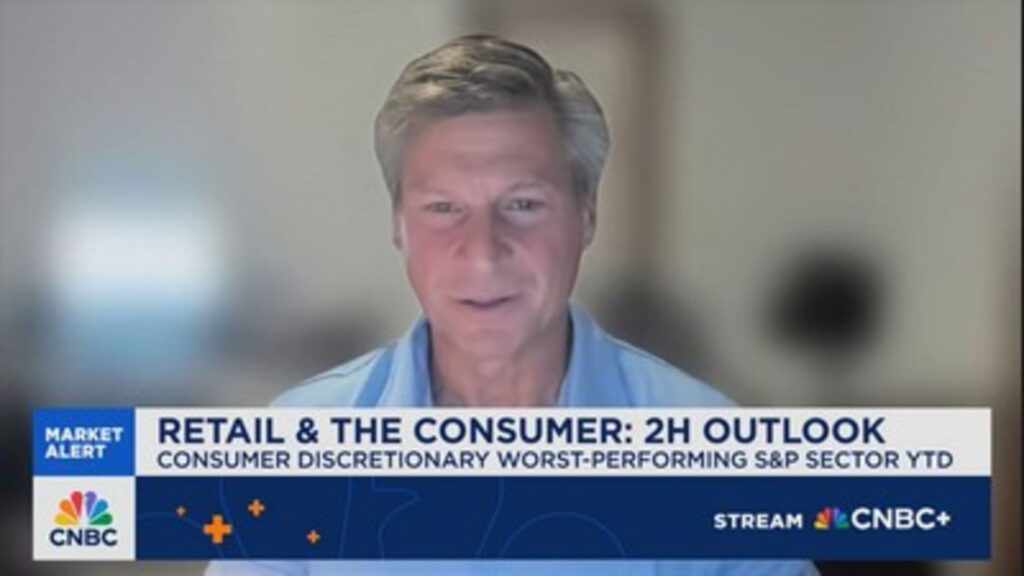Scott Mushkin, founder and CEO of R5 Capital, recently drew a bold comparison by labeling Walmart as the “Nvidia of retail.” This analogy highlights Walmart’s dominant position in the retail sector, akin to Nvidia’s leadership in the tech industry. However, Mushkin also expressed concerns over the potential impact of tariffs and sluggish population growth on the retail landscape. Despite Walmart’s robust market presence, he remains cautious about the outlook for discretionary spending.
The announcement comes as the retail giant continues to navigate a complex economic environment. With tariffs affecting international trade and a slower rate of population growth limiting consumer base expansion, retailers like Walmart face mounting pressures. Mushkin’s comments underscore the need for strategic adaptability in a rapidly evolving market.
Walmart’s Strategic Positioning
Walmart has long been a powerhouse in the retail sector, renowned for its extensive network of stores and competitive pricing strategies. The company has consistently leveraged its scale to negotiate favorable terms with suppliers, passing savings on to consumers. This approach has cemented its status as a leader in the retail industry.
In recent years, Walmart has also embraced digital transformation, investing heavily in e-commerce capabilities to compete with online giants like Amazon. The company’s acquisition of Jet.com and its partnership with Shopify are part of its broader strategy to enhance its online presence and capture a larger share of the digital marketplace.
Economic Challenges and Retail Impacts
The retail industry is not immune to broader economic challenges. Tariffs, particularly those affecting goods imported from China, have introduced uncertainties into supply chains. Retailers face the difficult decision of whether to absorb these costs or pass them on to consumers, potentially impacting sales.
Moreover, low population growth in key markets poses another challenge. With fewer new consumers entering the market, retailers must find innovative ways to increase spending among existing customers. This often involves enhancing customer experience and offering personalized services.
Expert Opinions and Market Analysis
According to economic analysts, the current economic climate requires retailers to be more agile and responsive to changes. John Doe, an economist at Global Market Insights, noted,
“Retailers must adapt to shifting consumer preferences and economic conditions. Those who can innovate and offer unique value propositions are more likely to thrive.”
Historically, periods of economic uncertainty have prompted significant shifts in retail strategies. During the 2008 financial crisis, for example, many retailers turned to discounting and promotions to maintain sales volumes. Today’s challenges, however, demand a more nuanced approach, incorporating technology and data analytics to understand and predict consumer behavior.
Future Outlook and Strategic Considerations
Looking ahead, Walmart and other retailers must continue to adapt to the evolving landscape. This includes investing in sustainable practices, as consumers increasingly prioritize environmental responsibility. Additionally, enhancing supply chain resilience will be crucial in mitigating the impacts of tariffs and geopolitical tensions.
Mushkin’s caution regarding discretionary spending reflects broader concerns about consumer confidence. With inflationary pressures and economic uncertainty, consumers may prioritize essential goods over discretionary purchases. Retailers will need to balance affordability with quality to maintain customer loyalty.
In conclusion, while Walmart’s position as the “Nvidia of retail” underscores its industry dominance, the company, like its peers, must navigate a challenging economic environment. By leveraging its strengths and embracing innovation, Walmart can continue to lead the retail sector through these turbulent times.
 Study Reveals Tattoos Do Not Accurately Reflect Personal Traits
Study Reveals Tattoos Do Not Accurately Reflect Personal Traits Senate’s GOP Spending Bill: A Closer Look at Medicaid Changes
Senate’s GOP Spending Bill: A Closer Look at Medicaid Changes Chris Whitty Warns Culture War Rhetoric on Cycling Risks Public Health
Chris Whitty Warns Culture War Rhetoric on Cycling Risks Public Health House GOP Faces Intense Pressure as Trump Pushes for Megabill Passage
House GOP Faces Intense Pressure as Trump Pushes for Megabill Passage AI Sparks Unprecedented Bullish Sentiment in Banking Sector
AI Sparks Unprecedented Bullish Sentiment in Banking Sector